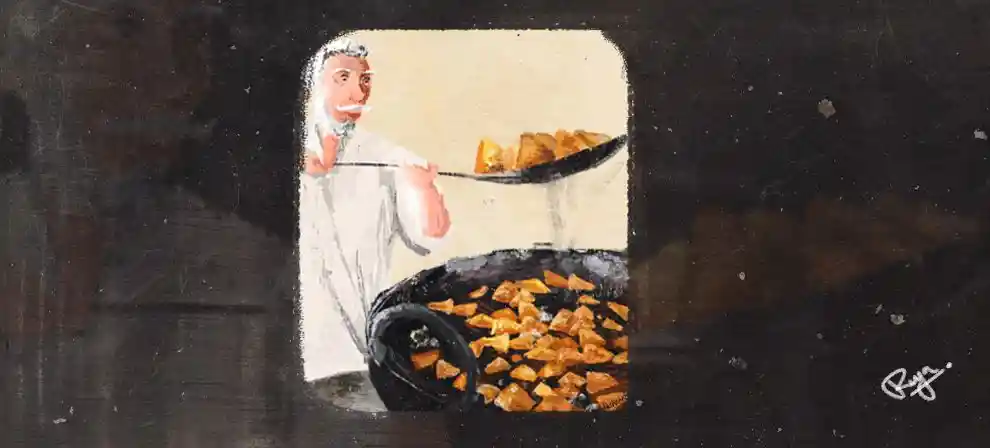The tasty tale of Samosa
Samosa and Chai seem like a culinary combination that has become the default of Sunday morning breakfast and office breaks in India. From metropolitan cities to rural villages, Samosa as a snack is a fan favourite everywhere. But there is a story behind this delicious snack.

Tale of Samosa. Illustrated by Riya Kumari: Visual Storyteller at ThisDay
Samosa is such a common snack that it has become synonymous with the local cuisine of India, but if you begin to go into the history of this dish, Samosa comes out as one of the earliest examples of globalisation and cross-cultural influences.
While Samosa is a common snack in India, its origins lie thousand of miles away in the Persian plateaus. Culinary literature and cookbooks dating back to the 10th century in the Middle East and early medieval Persian cookbooks mention a dish by the name of Sanbosag. An earlier variation of Samosa, filled with mincemeat which was carried by the travelling merchants during a long journey.
These early Persian sources mention how these travelling merchants would pack a large quantity of sanbusag in their saddlebags and enjoy it around a bonfire as a quick and filling snack. And it was these travelling merchants of the Middle-East that spread the taste of Samosa from Central Asia to North Africa, East Asia and South Asia. However, the story of the arrival of Sanbusag in India and its transformation into Samosa is a bit different.
The establishment of the Delhi Sultanate in India opened the doors for cross-cultural currents to cut through and the culture of India was influenced by these Persian and Middle-Eastern cultural currents. Whether it's architecture, language, politics or something as simple as food. While some believe Samosa came here with the migration of Middle-eastern chefs, who came to Indian courts looking for employment, others are of the opinion that it was the travelling merchants who brought Samosa to India, whatever might be the case, Samosa soon became a part of the royal diet.
Ibn Batuta, the famous Moroccan traveller who came to India in the 14th century, mentions in his account how a dish called sambusak was served to the guests in the court of Muhammad bin Tughlaq. From Ibn Batuta’s account, we also see the changing recipe of Samosa. He describes it as a triangular pastry filled with mincemeat, peas, pistachios and almonds, a more fitting recipe for the now changed social context of Samosa. Now, it wasn’t a ready-to-eat snack of the travellers but a delicacy in the royal kitchen and hence filled with expensive dry fruits.
Such was the popularity of Samosa, that famous Sufi scholar, Musician and Poet Amir Khusrau, who is also famous for his riddles, made one riddle with Samosa as a clue. It goes something like this:-
“Samosa kyun na khaya? Joota kyun na pehna?
Talaa na tha.”
Abu Fazal, one of the nine gems of Akbar’s court and author of Ain-i-Akbari also mentions how samosa was a dish enjoyed by the Mughal emperors.
Samosa thus was a dish both enjoyed by the common travelling merchants and the nobles, it’s an easy recipe with space for variation was soon a hit in the Indian subcontinent. The mince filling in time was replaced by the more popular potato filling, which was cheaper and easier to procure and more popular among the veg palettes of Indian masses. It was probably this flexibility of Samosa as a dish and of course, its mouth-watering taste that it has survived as a fan favourite snack throughout the year in India
Samosa exists in various forms across the world and in India itself, you might find a wide variety of variations in samosa with changing regions. While in some parts of India like Hyderabad and Bengal one can still enjoy samosa with mince filling, today the most prevalent form of Samosa in India is the one with potato filling, readily available at the shop next door. So next time you enjoy some Samosa, keep in mind its rich and tasty history too.


